18 Nights / 19 Days

From ancient times, people from all over the world have been drawn to India's magic - its fascinating cultural heritage encompasses a landscape as vast as her boundaries. A land that vibrates with myriad peoples, where ancient, cultural traditions, religious rituals, cuisine's, architectural amazement's, colours, sights, sounds, variety of wildlife, flora and fauna, still reflect the social, religious and geographical diversity born out of centuries of social upheaval brought by the foreign invasions.
Over 350 species of mammals and 1200 species of birds live on the subcontinent.. At the turn of the century, an estimated 40,000 tigers, roamed freely in the dense forests and grasslands with respect and held a proud place in the country's religious and cultural history. Today, the big cats are nearly wiped out. In 1970 a voluntary conservation scheme, "Project Tiger" was started to improve the tiger population.20-0431-03
Flight to Delhi. Arrival in Delhi and transfer to the hotel. Check in time is 1200 hrs.
In Delhi's 3000 years of existence, seven cities stood where the present capital of India stands. Here you'll encounter a fascinating blend of the ancient and the contemporary - where government buildings, medieval palaces and bazaars exist besides a modern metropolis. Delhi is a city waiting to be explored. After breakfast sightseeing of Old and New Delhi.
Visit the 7th city of Delhi, Shahjahanabad (Old Delhi) which was built by the Mughal Emperor Shah Jahan (1639-48 AD) after he shifted his capital from Agra to Delhi. Red Fort – the 17th century imposing fortress built in red sandstone is surrounded by a huge boundary wall 33m high. Inside are exquisite palaces and beautiful gardens.Opposite the Red Fort lies Jama Masjid (Friday Mosque) made of red sandstone and white marble, completed in 1656. It is India's largest mosque where more than 20.000 people can kneel in prayer. Visit Raj Ghat on the banks of the river Yamuna, Mahatma Gandhi's Memorial, where he was cremated following his assassination in January 1948. The memorial lies in the midst of landscaped gardens and made of a simple square platform of black marble inscribed with his last words "Hey Ram". An eternal flame burns 24 hours.
Afternoon visit New Delhi.
Visit the Humayun's Tomb, built by his wife Haji Begum in the 16th. Century. An early example of Mughal architecture considered the predecessor of the Taj Mahal. The Qutub Minar – the landmark of Delhi, a huge tower of victory started in 1199 and completed in 1368. The minar is 72.5m high with a diameter at the base 14.4m and 2.7m at the top. Proceed to the Rashtrapati Bhawan once the Viceroy's residence is now the official residence of the President of India. Designed by Lutyens, it combines western and eastern styles – the dome reflects the Buddhist stupa, the chattris Hindu and the graceful colonnades very British. It has 340 rooms. The Government Buildings designed by Baker, are topped by baroque domes and decorated with lotus motifs and elephants, while the north and south gateways are Mughal in design. The northern building has an inscription with "Liberty will not descend to a people; a people must raise themselves to liberty. It is a blessing which must be earned before it can be enjoyed". The Parliament House, designed by Baker is 173m in diameter. Inside is the library and chambers for the council of state, chamber of princes and legislative assembly. The India Gate (42m), commemorates the 70,000 Indian soldiers who died in the 1st world war. 13516 names of British and Indian soldiers killed in the Afghan War of 1919 are engraved on the arch and foundations. Under the arch, the Amar Jawan Jyoti commemorating Indian armed forces' losses in the Indo-Pakistan war of 1971.
Overnight stay at the hotel in Delhi.
Morning transfer to the airport to connect flight to Varanasi.
Varanasi derives its name from the two streams - Varuna in the north and Assi in the south, the British corrupted the name Varanasi to Banaras. The oldest name is Kashi, which means 'the City of Light'. It is dedicated to Lord Shiva and is the holiest city for the Hindus, also for the Jains, because the three tirthankars, 7th, 11th & 23rd were born here. It is believed that anyone who dies here goes straight to heaven The city draws pilgrims from all over the world, to worship, meditate and above all to bathe.
On arrival in Varanasi transfer to hotel. After check in excursion to Sarnath, 9 km from Varanasi, one of Buddhism's major centers in India. It was here that Buddha gave his first Sermon after attaining Nirvana. In the complex is the Dhamekh Stupa (5th-6th AD) or Dharma Chakra, the most imposing monument at Sarnath built to commemorate the place where Buddha delivered his first sermon to the five disciples. Also visit Dharmarajika Stupa that was built by Emperor Ashoka (273-326 BC). From this stupa a green marble casket containing human bones and pearls was found, said to be the relics of Buddha. It was the seat for Buddha's meditation. To the rear is the 5m lower portion polished sandstone Asokan Column (3rd century). The Deer Park on the south - west, has several species of deer. On the way back to the Hotel visit a modern Buddhist temple which has beautiful life size frescos of Buddhas life. In the vicinity is the sapling of the Bodhi tree brought from Sri Lanka, under which Buddha sat and attained enlightenment.
Overnight at the hotel in Delhi.
Today early morning you experience the life of this ancient city. See the beauty of the rising sun on the Ganges Boat Ride. The boat ride passes along some of the 100 ghats, with numerous palaces built by Hindu kings. Experience the early morning rituals of the Hindus being performed, thousands of people taking a bath in the holy river believing they will be free from the circle of rebirth. It is interesting to see the pilgrims offering sweets, flowers and holy water to the Sun God. Return to the hotel for breakfast.
Enjoy the feel of this holiest of holy cities - Varanasi. Visit the Bharat Mata Temple inaugurated by Mahatma Gandhi. It is a relief map of 'Mother India' in marble made to scale. The Durga Temple (18th century) built in Nagara style is painted red and has the typical five spires (symbolising the elements) merging into one (Brahma). The Banaras Hindu University (BHU) is one of the largest campus universities in India. Founded by Madan Mohan Malaviya at the turn of the century. It was originally intended for the study of Sanskrit, India art, music and culture. Drive through the university, which today has all the faculties of arts and science. Many of our earlier Indian leaders passed out from here. The New Visvanath Temple built in 1966 is located on the campus, and dedicated to Lord Shiva. It is one of the tallest in India.
After breakfast visit the Eastern and Western Group of temples.
The Eastern Group of temples are mainly dedicated to the Jain teachers - tirthankaras - The Parsvanatha Temple, the Adinatha Temple and the Santinatha Temple. There is a 4.5m statue of Adinatha in the main place of Jain worship. The temples are ornately carved on the outside with beautiful figures of Hindu gods, goddesses. The Western Group consists of a group of artistic temples built in sandstone. The sculptures of Hindu deities, dancers and musicians appear to be so natural as if they would come alive any time. We will visit the Varaha Temple dedicated to Vishnu, and also the Lakshmana Temple also dedicated to Vishnu. It is one of the earliest of the western enclosure temples dating from 930 to 950 AD. The Kandariya Mahadeva Temple is not only the largest of the temples, it is also artistically and architecturally the most perfect. Built between 1025 and 1050 it represents Chandella art at its most finely developed phase. After sightseeing drive to Bandhavgarh National Park through a beautiful valley with wild landscapes and picturesque villages.
Bandhavgarh National Park is one of the 15 tiger reserves of India. Earlier the hunting area of the Maharaja of Rewa spread over an area of 865 sq km was changed into a wildlife park in 1968. It has deep valleys with teak wood and bamboo trees you can see tiger, leopard, wild dogs, hyena, jackal, chital (spotted deer), sambhar, wild pigs, antelopes, langoor and different snake types. The flowering and fruit trees attract woodland birds which include Green pigeon, Jerdon’s leaf bird, crested serpent eagle and Variable hawk eagle.
Dinner and overnight.
Early morning enjoy a jeep safari through the jungle to chance upon the tiger.
Return for breakfast and relax till your afternoon game viewing. Another pleasant a jeep safari.
Dinner and overnight.
Early morning enjoy another wonderful jungle visit. Later in the evening drive to Umaria to connect overnight train to Agra.
Overnight in Train.
Arrival in Agra at 0920 hrs. On arrival in Agra transfer to the hotel. Agra stands on the right bank of the river Yamuna, was once the seat of the Mughal rulers, the zenith of art and an enshrined romance. A town famous for its beautiful medieval monuments. The passion of the Mughals for building endowed it with some of the loveliest buildings in the world. After some rest sightseeing of Agra. Visit the world famous monument of India, the Taj Mahal (1631-1653), a poem in white marble, built by Shah Jahan in memory of his beloved wife, Mumtaj Mahal, who died giving birth to their 14th child. It employed 20,000 workers from the Central Asia and Europe for 22 years to construct this extravagant monument of love, inlaying the white marble edifice with precious and semi precious stones. After Taj Mahal visit Agra Fort (Fort and Palace) situated on the west bank of the river Jamuna, made by the Mughal King Akbar in the 16th century and completed by his grandson Shah Jahan, who was imprisoned by his son Aurangzeb for 8 years in this fort, before his death. The fort is crescent - shaped and the perimeter is 2.4 km long.
Overnight at the hotel.
IMP: Taj Mahal is Closed on Friday.
After breakfast drive to Bhatarpur. Enroute visit Fatehpur Sikri.
40 km (1 hour) from Agra, lies the beautiful and deserted medieval city, Fatehpur Sikri, built by Akbar the Great in the 16th century to serve as the capital of his vast empire. It was mysteriously abandoned 13 years later. Today, it is perfectly preserved as a ghost city built at the height of the empire's splendor.
Further drive to the Bharatpur Bird Sanctuary or Keoladeo Ghana National Park which was established in 1956. This 29 sq km marshland is one of the finest bird sanctuaries in the world with over 360 species of birds, out of which 117 are the local birds. Now a UNESCO World Heritage site, it used to be a part of the private shooting reserve of the Maharaja of Bharatpur.
Early morning and dusk are the best times for viewing the birds and animals. Among many birds species to be seen are egrets, storks, ducks, Chinese coots, kingfishers, spoonbills, sarus cranes and several birds of prey, including falcon, marsh harrier and eagle. Alone 80 species of ducks can be spotted here. There are also chital, nilgai, deer, wild cats, hyenas and wild boar whilst near the entrance there are usually some very large rock pythons. During November to February the northern hemisphere migratory birds visit the park from China, Europe and Siberia, including the rare Siberian Crane.
Afternoon Rickshaw ride in Sanctuary.
Overnight at the hotel.
Early morning enjoy a boat ride on the lake, watch the birds from close quarters. Return to the hotel for breakfast and drive to Ranthambore. After arrival check-in in the hotel.
Rest of the day is free.
Ranthambore National Park, one of the finest tiger reserves in the country under the Project Tiger scheme. It covers an area of 410 sq km running from the easternmost spur of the Aravallis to the Vindhya range. The nearest town Sawai Madhopur is 10 km away. The park is set in a dry deciduous forest, the area covers rocky hills and open valleys dotted with small pools and fruit trees. The Ranthambore Fort overlooks the sanctuary and dominates the landscape. The Fort was the stronghold of the Yadavs in the 8th century, attacked time and again, changing many hands, finally into the hands of the house of Jaipur. Originally Ranthambore was the hunting area of the Maharaja of Jaipur. Tiger sightings are reported almost daily usually in the early mornings during November-April. The lake grasslands and the drier areas of the park provide fine habitat for sambar; antelopes, langoor, few leopards, nilgai, chinkara, sloth bear, jackal, wild boar, crocodile, different types of snakes, the occasional rare caracal, and about 300 species of birds.
Morning and evening Jeep rides to the Ranthambore National Park to view the wildlife and birds in the park.
Morning jeep safari through the reserve to view the wildlife and birds in the park.
After Jeep safari drive to Jaipur. On arrival in Jaipur check in at the hotel.
Further drive to Jaipur. After arrival check-in to hotel. Jaipur was built in the 18th century by Maharaja Jai Singh II. It is a planned city built with ancient Hindu rules as the colonial capital of a richly colorful state. It was made attractive with the pink wash - a traditional colour of welcome in 1853 in honour of the visit of Prince Albert.
Overnight at the hotel.
After breakfast, half-day excursion trip takes you to Amber Fort. En route, make a photo stop at the palace of winds the Hawa Mahal. A 5 stored building with 25cm thick facade from the 18 century having 953 windows and niches so that ladies of royal family could see th e procession and events in the city without being visible to the people. Proceed to the Amber City Fort situated 130m high with the Aravalli hills around and 11 km north of Jaipur. It was the ancient capital of the Kachhawaha Rajputs till 1037. Enjoy an Elephant ride to the top of the Palace fort.
Afternoon visit the "Pink City" of Jaipur. The City Palace occupies the center of Jaipur. It now houses the Royal residence and museums with collections of textiles and costumes, armoury, manuscripts, paintings etc. Also visit Jantar Mantar (1728-34) by king astrologer Jai Singh II. The instruments are built of stone with marble facing on the important plains for measuring the harmony of the heavens. Each instrument serves a particular function and each gives an accurate reading.
In case you have time stroll through the colourful bazaar of Jaipur, where the coulours, sights and sounds with enthrall you.
Overnight in hotel.
After breakfast drive to Jodhpur. On arrival in Jodhpur check in at the hotel. Jodhpur, the second largest city of Rajasthan, was once the capital of Marwar It sprawls around the massively impressive cliff top Meherangarh Fort.
On arrival in Jodhpur check in at the hotel.
After breakfast visit the impressive Mehrangarh Fort on a 37 m low sandstone hill built by Rao Jodha in 1459. From the top of the fort one can get a bird’s eye view of the old city. You will notice the predominance of blue houses referred to as Brahmin houses - the colour being associated with the high caste. Proceed to the Jaswant Thada, an imposing marble cenotaph built in 1899 for Maharajah Jaswant Singh II, and smaller memorials to other Maharajahs of Jodhpur. At the end of the tour enjoy a short walk through the local and vibrant bazaar of Jodhpur. Afternoon free.
Overnight at the hotel.
After breakfast drive to Udaipur. En-route visit Ranakpur, the wonderful 3 temples of the Jain sect dating back to the 14th/15th century. The unforgettable main Temple dedicated to Adinatha the first Tirthankar (1439) built in marble took 65 years to complete. It is one of the five holy Jain pilgrimage centres, and has one of the best temple complexes. One can enjoy a good lunch (on direct payment) amid the 19th century walled orchard the Maharani Bagh Orchard belonging to the Royal family. The orchard is full of bougainvillea and fruit trees predominantly mangoes. A beautiful two hours drive will bring you to Udaipur. Upon arrival check-in to the hotel. Rest of the day free.
Overnight stay at the hotel in Udaipur.
The city of Udaipur lies in the Girwa valley amidst the Aravali hills of south Rajasthan. It is considered a romantic city - with its lakes, gardens, temples and palaces - an Oasis in the Thar desert. The old city is a traditionally planned fortified walled city, a maze of narrow winding lanes flanked by houses with doorways decorated with Mewar folk art, windows with stained glass or jali screens, massive havelis with large inner courtyards and shops. The legendary Ranas who ruled, traced their ancestry to the Sun Dynasty. This morning visit the City Palace built on the bank of the Pichola Lake, by Maharana Udai Singh in 1570. The impressive complex of several palaces is a blend of Rajput and Mughul influences. Half of it is still occupied by the Royal family, and part converted into a museum. The Jagdish Temple – (1651) was built by Maharana Jagat Singh. A fine example of the Nagara style of temple architecture. A brass Garuda stands outside and stone elephants flank the entrance steps. Inside is a black stone image of Vishnu as Jagannath, the Lord of the Universe. Sahelion-ki Bari an ornamental pleasure garden specially made for the ladies of the palace in the 18th century. It has beautiful fountains, trees and flowers.
After breakfast transfer to the airport to connect flight to Mumbai. On arrival in Bombay transfer to the hotel. Mumbai is India's most cosmopolitan city, an ancient port and trading centre. This palm- fringed shore of the Arabian Sea was the British Empire's entrance to its 'Crown Jewel'. Mumbai is also the centre for Hindi films. It is called Bollywood, with a credit of almost 900 films a year.
This afternoon a short tour Mumbai city, rich blend of East and West. The tour includes the 26 mtr high British-built Arch "Gateway of India", Mumbai's landmark built to honour the visit of George V and Queen Mary in 1911. Marine Drive dubbed as the Queen's Necklace is Mumbai's most popular promenades and a favourite sunset watching spot. The Kamla Nehru Park from where you have a picturesque view of the city, Hanging Gardens are so named since they are located on top of a series of tanks that supply water to Mumbai. Pass by the 'towers of silence' the crematorium of the Parsis. Also visit Mani Bhawan a private house where Mahatma Gandhi used to stay when he visited Mumbai. It is now a museum and research library with 20,000 volumes.
Early morning transfer to airport and flight back home.
We are Dealing in Tour Operators Services Read More...

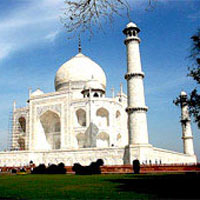 21D/20N
21D/20N
World Heritage Site India Tours
New Delhi - Varanasi - Khajuraho - Agra - Jaipur - Udaipur - Chennai - Kochi - Kuma..
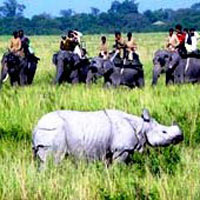 20D/19N
20D/19N
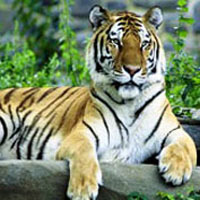 16D/15N
16D/15N
New Delhi - Nagpur - Kanha - Bandhavgarh - Agra - Bharatpur - Ranthambore - Jaipur
 13D/12N
13D/12N
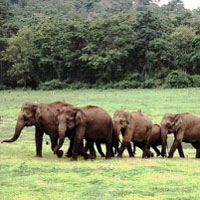 9D/8N
9D/8N
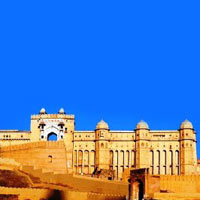 7D/6N
7D/6N
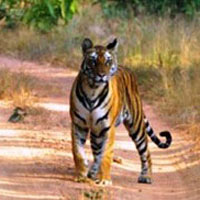 10D/9N
10D/9N
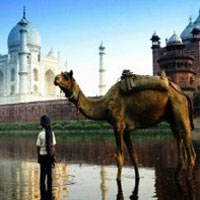 16D/15N
16D/15N
Golden Triangle + Camel Safari Tour
Agra - Bikaner - New Delhi - Jaipur - Jodhpur - Mandawa - Udaipur
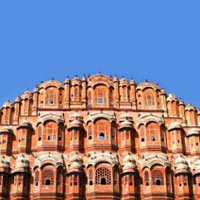 6D/5N
6D/5N
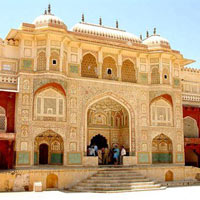 19D/18N
19D/18N
Rajasthan Tour with Varanasi Tour
New Delhi - Mandawa - Bikaner - Jaisalmer - Jodhpur - Pushkar - Jaipur - Agra - Var..
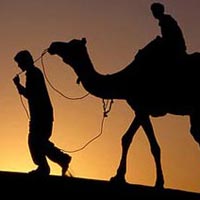 19D/18N
19D/18N
New Delhi - Agra - Jaipur - Jodhpur - Jaisalmer - Bikaner - Mandawa - Mount Abu - U..
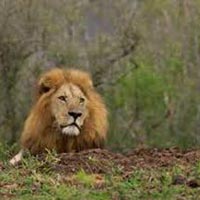 19D/18N
19D/18N
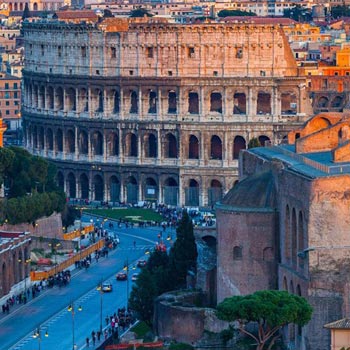 19D/18N
19D/18N
Rome - Venice - Nice - Innsbruck - Paris - Brussels - Amsterdam - Lucerne - London
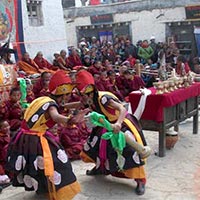 19D/18N
19D/18N
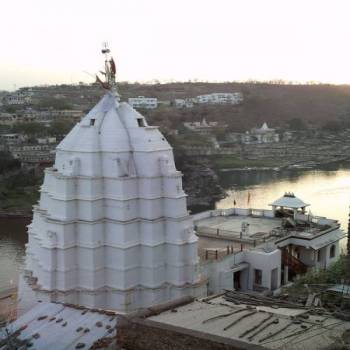 19D/18N
19D/18N
New Delhi - Indore - Ujjain - Kathmandu - Bhopal - Bhojpur - Pachmarhi - Kanha - Ba..
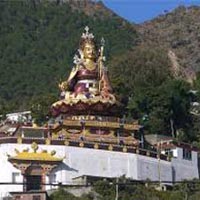 19D/18N
19D/18N
Himachal - Buddhist Circuit Tour
New Delhi - Chandigarh City - Shimla - Sarahan - Sangla
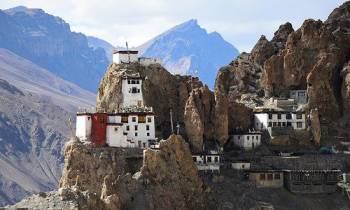 19D/18N
19D/18N
Tribal Tour for Kinnaur & Spiti
Shimla - Sarahan - Sangla - Tabo - Lahaul & Spiti
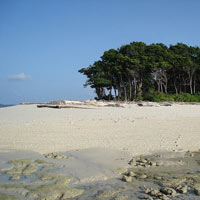 19D/18N
19D/18N
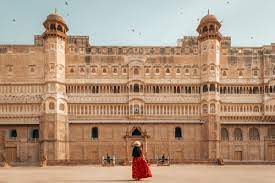 13D/12N
13D/12N
Rajasthan Tour Package 12 Night - 13 Days
Ajmer - Bikaner - Jaipur - Jaisalmer - Jodhpur - Mount Abu - Pushkar - Udaipur
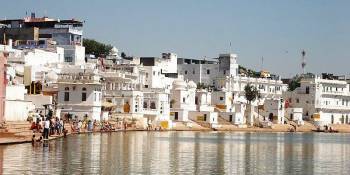 13D/12N
13D/12N
12 Nights Rajasthan Package From Jaipur
Ajmer - Bikaner - Jaipur - Jaisalmer - Jodhpur - Mount Abu - Pushkar - Udaipur
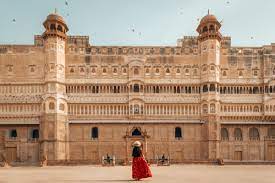 13D/12N
13D/12N
Rajasthan Tour Package 12 Night - 13 Days
Ajmer - Bikaner - Jaipur - Jaisalmer - Jodhpur - Mount Abu - Pushkar - Udaipur
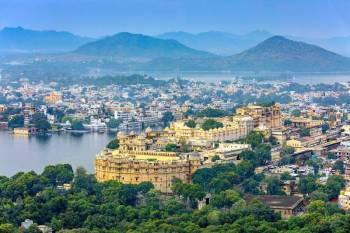 12D/11N
12D/11N
11 Nights 12 Days - Delhi Agra Rajasthan
New Delhi - Mathura - Agra - Jaipur - Ajmer - Pushkar - Udaipur - Mount Abu - Ranak..
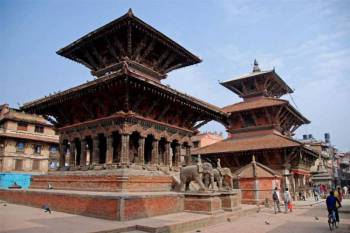 12D/11N
12D/11N
11 Nights - 12 Days Nepal Tour Package - 2
Prayagraj - Gorakhpur - Varanasi - Ayodhya - Kathmandu - Pokhara - Chitwan - janakpur
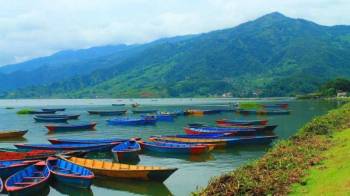 12D/11N
12D/11N
11 Nights - 12 Days Nepal Tour From Gora..
Prayagraj - Gorakhpur - Varanasi - Ayodhya - Kathmandu - Pokhara - Chitwan - janakpur
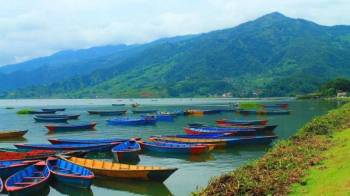 12D/11N
12D/11N
11 Nights - 12 Days Nepal Tour From Gora..
Prayagraj - Gorakhpur - Varanasi - Ayodhya - Kathmandu - Pokhara - Chitwan - janakpur
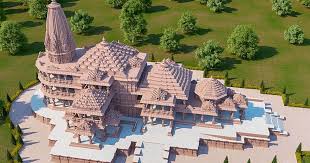 12D/11N
12D/11N
Prayagraj - Varanasi - Bodhgaya - Ayodhya - Pokhara - Chitwan - Parsa
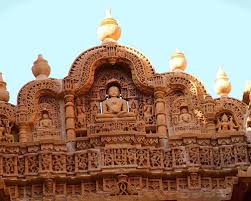 10D/9N
10D/9N
9 Night - 10 Days Rajasthan Tour Package
Ajmer - Jaipur - Jaisalmer - Jodhpur - Mount Abu - Udaipur